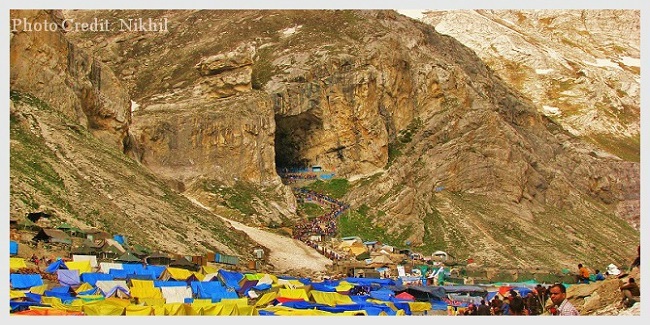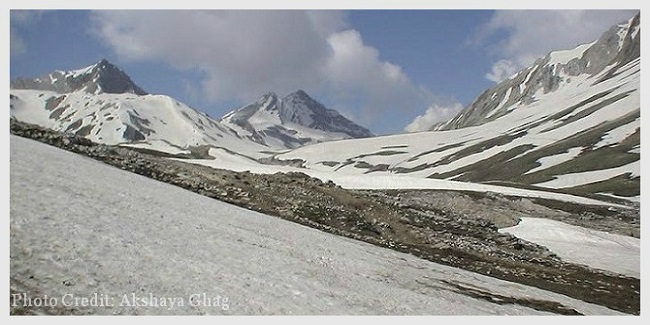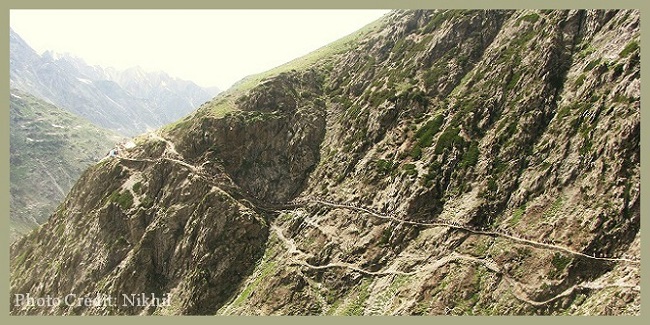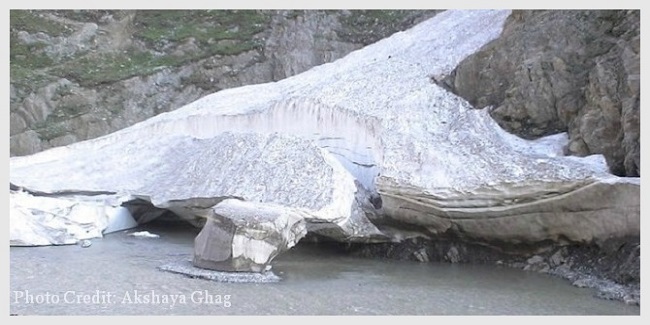Amarnath
Located in the state of Jammu and Kashmir, Amarnath is one of the most revered Hindu pilgrimages in India.
Situated at a height of 14,500 feet above the sea level, Amarnath cave houses a naturally formed stalagmite structure that waxes and wanes with the phases of the moon. Hindus believe the stalagmite ‘lingam’ symbolises the powers of Lord Shiva.
The cave is covered with snow almost throughout the year except for a short period in summers when it’s open for pilgrims.
The icy Shiva lingam forms naturally around May and stays on till early August and gradually wanes off thereafter. Dedicated to Lord Shiva, the Amarnath shrine pulls hordes of devotees every year.
To reach the holy cave, pilgrims have to trek through challenging mountainous terrain and face unpredictable weather conditions.
The shrine is managed by Shri Amarnath Shrine Board (SASB), which is responsible for the management of Amarnath Yatra and provision of facilities for the pilgrims.
Since the holy cave of Amarnath is located in the state of J&K, the Hindu pilgrimage bears a significant security threat every year.
To counter any attempt to hamper Amarnath yatra or hurt the pilgrims, thousands of CRPF and Army soldiers are deployed here every year.
It seems no threat is daunting enough for the lakhs of devotees, who brave the challenging weather, difficult terrain and looming security threats and visit the holy shrine every year seeking Lord Shiva's blessings.
Opening and Closing Dates For Amarnath Yatra
Opening Date Of Amarnath Yatra For The Year 2016: 2 July 2016
Closing Date Of Amarnath Yatra For The Year 2016: 18 August 2016
Legend associated with Amarnath
As the legend goes, once Goddess Parvati asked Lord Shiva as to why the number of beads in his hair was increasing. In reply to this Shiva told her that each time Goddess Parvati was reborn, a bead was added to the string. This amazed Parvati and she curiously asked Lord Shiva that why and how Lord Shiva was immortal when Parvati herself had to die and reborn every time.
In response, Lord Shiva decided to narrate ‘Amar Katha’ to her, which held the secret of creation and immortality. To narrate the story, Shiva proceeded with Parvati looking for an isolated place where none other could hear the eternal secret.
Amarnath cave is revered as a pilgrimage as it is the place where Lord Shiva shared the secret of life and immortality with his divine consort Parvati.
Its believed that on his way to the Amarnath cave, Lord Shiva gradually shed away all his belongings. He left his bull, Nandi, at Pahalgam (Bail gaon).
At Chandanwari, he released the moon from his hair. Further ahead, proceeding towards the cave, on the banks of the lake Sheshnag, Lord Shiva released his snakes and at Mahagunas Parvat (Mahaganesh Parvat) he left his son Lord Ganesha.
At Panjtarni, he left behind the five elements which constitute universe – fire, earth, water, air and sky.
Then finally Lord Shiva entered the cave alongwith Parvati. Once there, to ensure that no living being would overhear the tale, Shiva created ‘Kaalagni’ and spread fire all around to eliminate every living being in and around the cave.
However, while Lord Shiva was narrating ‘Amar Katha’ and recounting the secret of creation to Parvati, a pair of mating doves overheard their conversation and having heard the secret are reborn again and again in this cave which has become their eternal abode.
The Notified Rates for Ponies
From Chandanwari to Holy Cave: INR 2800
From Panjtarni to Holy Cave: INR 1100
From Baltal to Holy Cave: INR 2200
The Notified Rates for ‘Pitthoos’
From Chandanwari to Holy Cave: INR 1750
From Panjtarni to Holy Cave: INR 600
From Baltal to Holy Cave: INR 1210
Compare and Book Hotels










